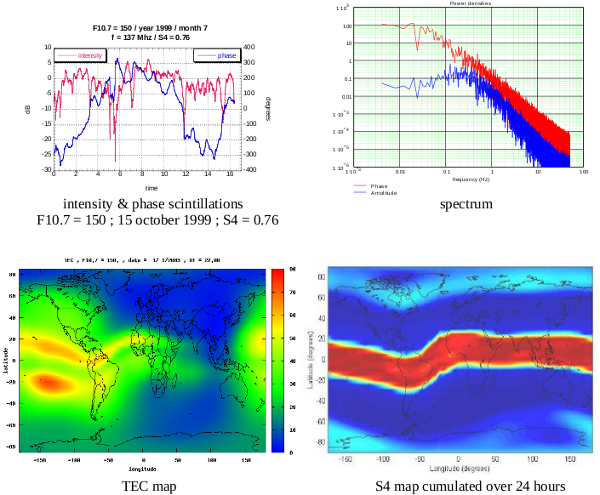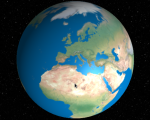GISM
Global Ionospheric Scintillation Model
Overview
The Global Ionospheric Scintillation Model allows obtaining both mean errors and scintillations due to propagation through ionosphere. This model has been accepted by International Telecommunications Union (ITU) as a reference code for scintillations evaluations.
Amplitude and phase signal fluctuations are the result of propagation through ionosphere electron density irregularities. These signal fluctuations may occur specially during equinoxes, after sunset, and last a few hours. They are more intense in periods of high solar activity. These fluctuations result in signal degradation from VHF up to C band. They may affect several applications as navigation systems, communications, remote sensing and earth observation systems. Two globe regions are impacted by such events: equatorial regions (-20° to +20° magnetic latitude) and polar regions (> 60°). Scintillations are more intense at the equator, and the characteristics are different between these two regions.
GISM allows assessing both the mean effects and the scintillations for propagation through ionosphere for any locations of transmitter and receiver. Two sub models are involved. The first one provides the mean errors. It is based on a resolution of Haselgrove equations. The second one provides the scintillation effects. It is based on a resolution of the parabolic equation.
The electron density inside ionosphere at any time and location which is an input of both sub models is provided by NeQuick model developed by Universities of Graz and Trieste. Inputs of this model are the solar flux number, the year, the day of the year and the local time. NeQuick is used as a subroutine in the GISM model.
The line of sight is determined by resolution of Haselgrove equations. Mean errors are subsequently provided: range error, Angular error, Faraday rotation, … The scintillations are then calculated using a split step technique based on Fast Fourier Transform calculations.
Scintillation outputs
- Intensity and phase scintillation indexes (S4 & sigma phi)
- Range and phase RMS errors
- Angle of arrival fluctuations
- Coherence lengths
- Probabilities
- Spectrum













